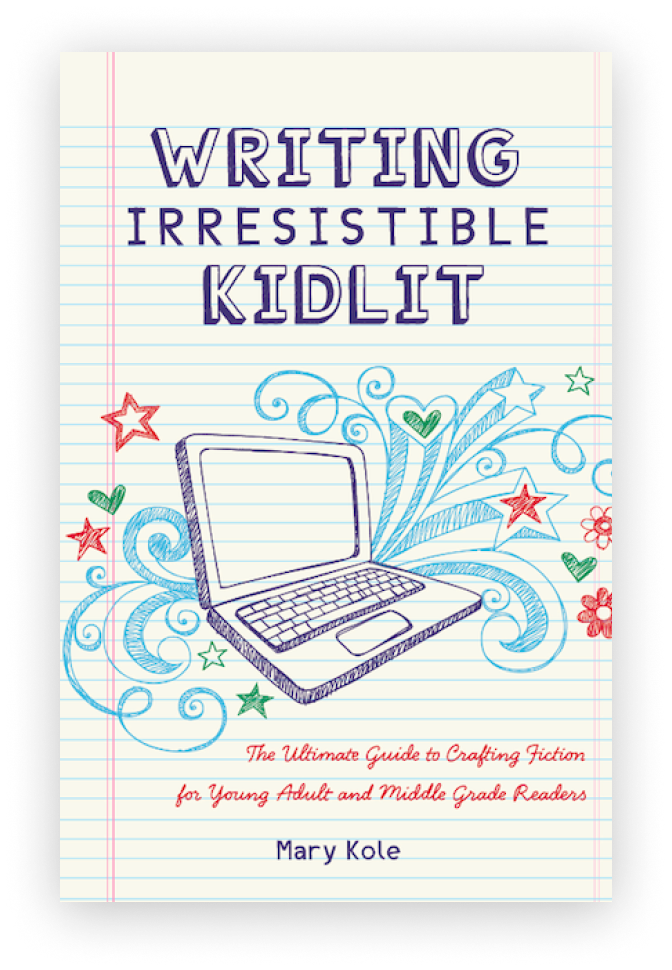Cause and Effect Logic in Plot
By Mary Kole
Mary Kole is a former literary agent, freelance editor, writing teacher, author of Writing Irresistible Kidlit, and IP developer for major publishers, with over a decade in the publishing industry.
Writing a novel takes time, effort, and a lot of creativity. Aspiring writers often go through a lot of research and brainstorming before sitting down to pen a manuscript, including writing a rigorous novel outline. The process of drafting a book is not just about coming up with an interesting storyline, but also about putting your thoughts together in a way that can hook the reader. This is why your storytelling and plot points need a certain sense of logic.
One of the most important aspects of writing a novel is its structure. The structure of a novel is what binds the story together and sets the pace for the reader. In this article, I’ll discuss how you can use the concept of cause and effect to create a compelling and satisfying novel structure or memoir outline.
How Does Cause and Effect Play into Novel Structure?
Novel structure refers to the way events in a novel are arranged in order to tell a story that makes sense. A novel outline can call for chronological storytelling, or a more elaborate and complex narrative structure. A book can be put together in any number of ways, but the most popular examples include the three-act structure, the five-act structure, and the hero's journey.
The hero's journey is one of the most popular structures in modern fiction. It is a pattern of storytelling that involves a protagonist who goes on a journey, faces challenges, and overcomes them to achieve their character objective. Along the way, they encounter internal conflict and external conflict, and grow and change as a person.
The Importance of Cause and Effect
Cause and effect is the principle that suggests that every event has a cause, ideally driven by a proactive protagonist, and that every plot point has an effect. In a novel, the cause is what leads to an effect, and vice versa. By creating a clear and concise cause and effect chain of logic throughout your entire novel plot, you can create a structure that keeps the reader's attention and interest. Best of all, the story seems cohesive and readers can always follow the narrative and understand the stakes for the character.
In essence, the cause is your plot point, and the effect is the emotional impact that the plot point has on the reader, which is usually rendered through the tool of interiority. By executing this cause and effect relationship in your novel, you can create an emotionally compelling and satisfying reading experience.
How to Execute Cause and Effect in a Novel
To execute a cause and effect relationship in your novel, you should begin by outlining the major plot points of your story. Then, you should connect these plot points using a cause and effect relationship. Ask yourself, "What caused this event?" and "What are the effects of this event?" Finally, ask, “And? So?” to make sure that every plot point matters to the overall narrative.
By connecting these plot points using cause and effect, you can create a structure that not only makes logical sense but also has an emotional impact on the reader. You can use this structure to create conflict, tension, suspense, and anticipation in your reader’s mind.
Common Mistakes Writers Make
One of the most common mistakes that writers make is not applying the principle of cause and effect in their narrative structure. This can make events feel disconnected, and can even be confusing to readers. If you confuse them, you lose them, so the book idea you’re working on could fail to generate an emotional impact on the reader.
Another mistake that writers make is not applying plot logic. Plot logic is the idea that everything that happens in a novel should make sense and be believable within the context of the story. This comes from the character’s own logic, as well as what a character chooses to do within a story should resonate with who they are and the journey they’re on.
In conclusion, crafting an appealing novel structure using cause and effect is crucial for aspiring writers who want to create emotionally compelling and satisfying reading experiences. By using the principles outlined in this article, you can create a novel structure that keeps the reader hooked from beginning to end. Remember to always apply the concept of cause and effect and plot logic to create a novel that makes sense and grabs reader interest.

Click here to purchase Writing Irresistible Kidlit, my book on fiction craft for MG and YA novels, out from Writer's Digest Books. This will show you my writing craft philosophy and give you lots of valuable advice, including tips for the novel revision process and self-editing. There are over 35 example novels cited and discussed throughout. It’s a valuable resource for any writer’s toolkit.
Click here to purchase Irresistible Query Letters, my book on query letters, including over forty examples with comprehensive notes on each one. There’s a ton of submission advice, best practices, and insider information in these pages, and you’ll really enjoy seeing what other writers are doing in the slush.
Click here to purchase Writing Interiority: Crafting Irresistible Characters, my book on interiority and character creation. Explore your protagonist’s thoughts, feelings, reactions and interpretations, expectations, and inner struggles to create a rich, immersive experience. This guide will empower you to create characters who live and breathe on the page, fostering an unbreakable bond with your audience.





